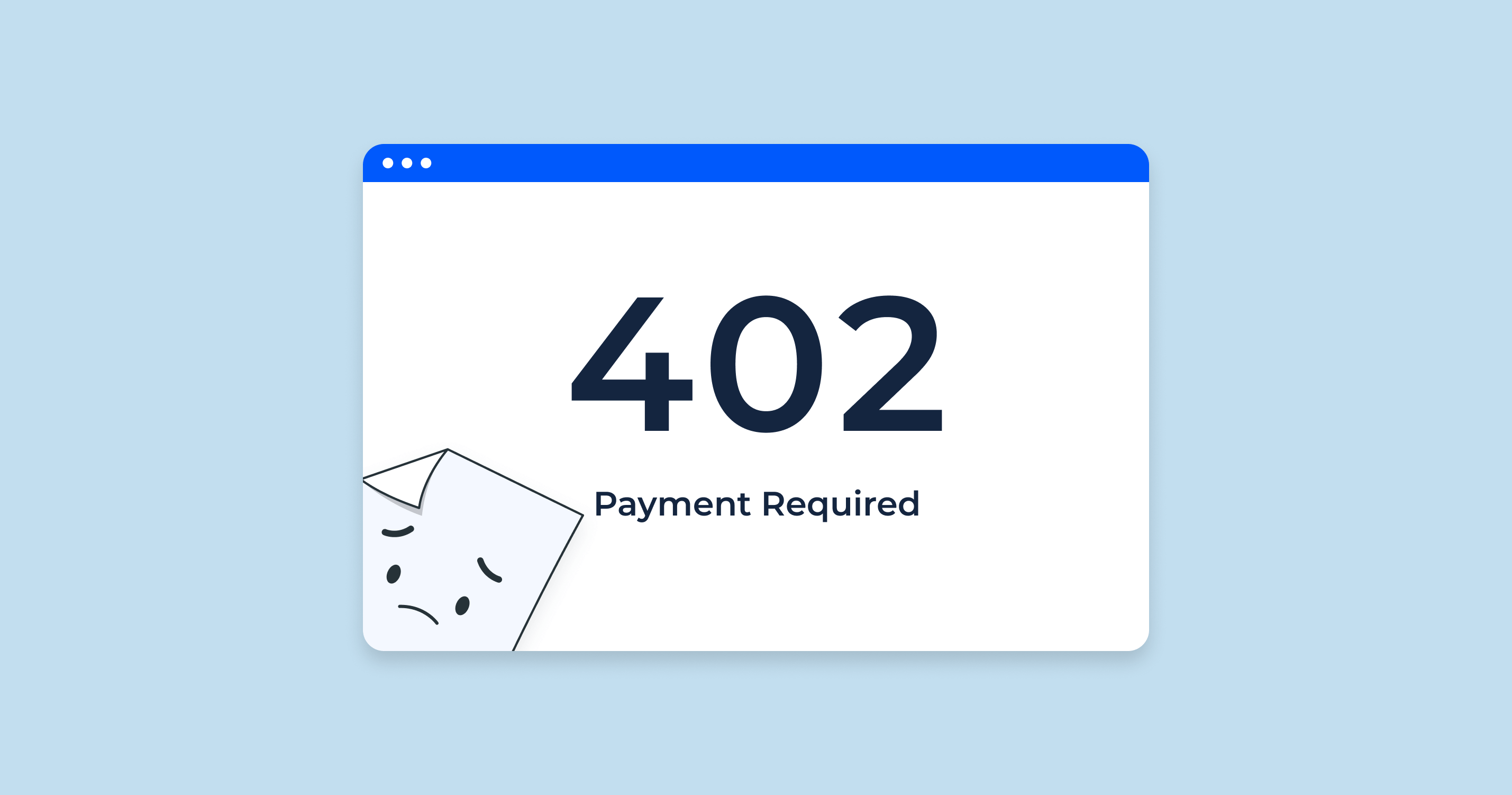What is HTTP 402?
The status code HTTP 402 denotes “Payment Required.” The HTTP 402 code was initially intended to be a mechanism for micropayment or digital currency systems.
It is still mostly unutilized in the HTTP/1.1 standard as of the most recent update. Its intended purpose is to inform the client that the request cannot be fulfilled without payment; however, it is not specified exactly how or for what purposes, so developers or particular platforms will likely be responsible for implementing it.

Common Causes
Because HTTP 402 is not frequently seen in popular web applications, you may find it unexpected when you come across it. Nonetheless, a few possible reasons could be:
- Experimental or Proprietary Use: HTTP 402 may be used by certain services for proprietary or experimental purposes.
- Digital Payment Systems: The code may be used by platforms developing new digital payment or micropayment techniques.
- Restricted Content Access: Websites may use 402s to indicate features or content that require a subscription in order to access.
Recognize the problem
To identify the underlying cause of an HTTP 402 error that you or a user encounters, diagnosis is essential:
- Review the API or Service Documentation: If the service you are interacting with has records, they may shed light on the circumstances surrounding a potential 402 return.
- Inspect Headers: Further information about the payment requirement or context may be found in the HTTP response headers.
- Check for Website or Service Updates: Platforms may occasionally roll out new features or payment schemes that use the 402 status.
How to Avoid
The main factor in preventing HTTP 402 is its use-case. Nevertheless, follow these general guidelines:
- Stay Updated: Stay informed about any updates or modifications from the services you use.
- Provide Clear User Instructions: When creating a system that makes use of 402, make sure users are aware of the potential situations in which they may run into it.
- Regular Monitoring: Use monitoring tools to keep an eye out for unexpected 402 responses, which could be a sign of problems or misconfigurations.
How to Fix it
The root cause of a 402 error determines how to fix it. The following actions are things to think about:
- Fulfill the Payment Requirement: If the content or service requires payment and the 402 error is valid, take into consideration paying the required amount.
- Contact Service Providers: If you’re not sure why the error occurred, getting in touch with the webmaster or service provider in question can help.
- Review and Adjust Configurations: Should you, as a developer, send a 402 status by error, check your code or configurations to fix the problem.
Conclusion
In conclusion, even though it is uncommon in modern web applications, the HTTP 402 “Payment Required” status code has a special place in the HTTP standard. Comprehending its subtleties can facilitate web interactions and help developers and users avoid potential problems.
Selecting a trustworthy ASP.NET hosting provider is essential to your success online. It’s never too late to look into alternative ASP.NET hosting companies if you’re not happy with current host.
ASPHostPortal is one of the best alternatives for your ASP.NET hosting, offering:
- Better pricing and value for money
- Feature-rich hosting plans
- 99.9% uptime guarantee
- Enhanced security features
- Global data center locations
- Multilingual customer support
Whether you’re a seasoned web developer, a personal blogger, or a business owner, we’ve kept you in mind when designing our hosting services.
We provide everything you need, from developer-made tools like Git integration and access managers for user management to basic features like a free domain name, unlimited bandwidth, and free SSL.
Make the switch to ASPHostPortal right now to see the difference for yourself.

Javier is Content Specialist and also .NET developer. He writes helpful guides and articles, assist with other marketing and .NET community work



